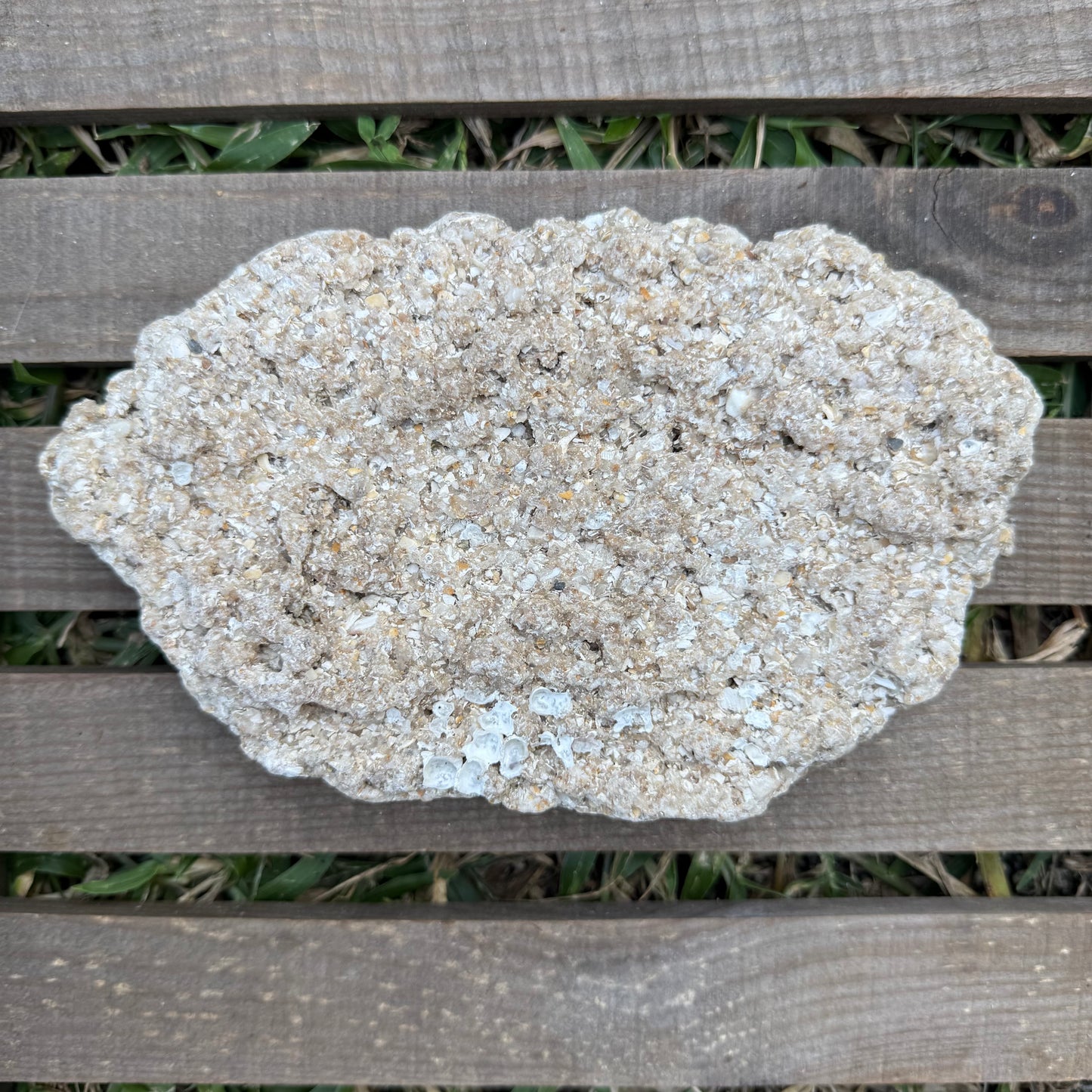Coquina Fossil Rock – 1.5 lb Florida Shell Limestone | Natural Coastal Formation & Display Stone
Coquina Fossil Rock – 1.5 lb Florida Shell Limestone | Natural Coastal Formation & Display Stone
Couldn't load pickup availability
This substantial coquina fossil rock is a naturally formed piece of Florida’s coastal history. Its surface reveals countless fragments of shells and sand cemented together over thousands of years — a striking example of how ocean energy and time can transform the shoreline into stone.
About Coquina:
Coquina is a type of limestone made from cemented shell and sand. Named for the small coquina clam, it ranges in composition from shell-dense to sand-rich, each layer telling the story of shifting seas and ancient beaches.
Origin:
Coquina began forming when waves swept together layers of sand and shell fragments. As these shells partially dissolved, they became immersed in seawater rich in calcium carbonate. Over time, calcite crystallized and bonded the mixture into solid rock. Most coquina along Florida’s coast dates back about 120,000 years, when sea levels were 7–20 feet higher than today.
Cultural Significance:
The Anastasia Formation of coquina — found along Florida’s Atlantic coast — was famously quarried from Anastasia Island. Spanish builders used this same stone to construct Castillo de San Marcos in St. Augustine, the oldest masonry fort in the continental U.S. Its soft yet resilient texture allowed it to absorb cannon fire, helping the fort endure for centuries.
Details:
- Weight: 1.5 lb.
- Naturally formed and unpolished
- Ethically collected from Florida coastal deposits
- One-of-a-kind specimen — you will receive this exact piece
- Approximately 7.5" x 4.5" x 1"
Share






